Up till now, Honda has avoided direct confrontation with the two Malaysian brands, staying at a level just above them price-wise. Though it has smaller models than the City, it did not see much point in getting into the ‘national segment’.
That changes today with the launch of the new Honda WR-V which is a direct rival to the two popular small SUVs in Malaysia – the Perodua Ativa and Proton X50. These two models have been selling at a rate of around 6,500 units a month (combined) and Honda Malaysia is expecting to do about 1,300 units with the WR-V.
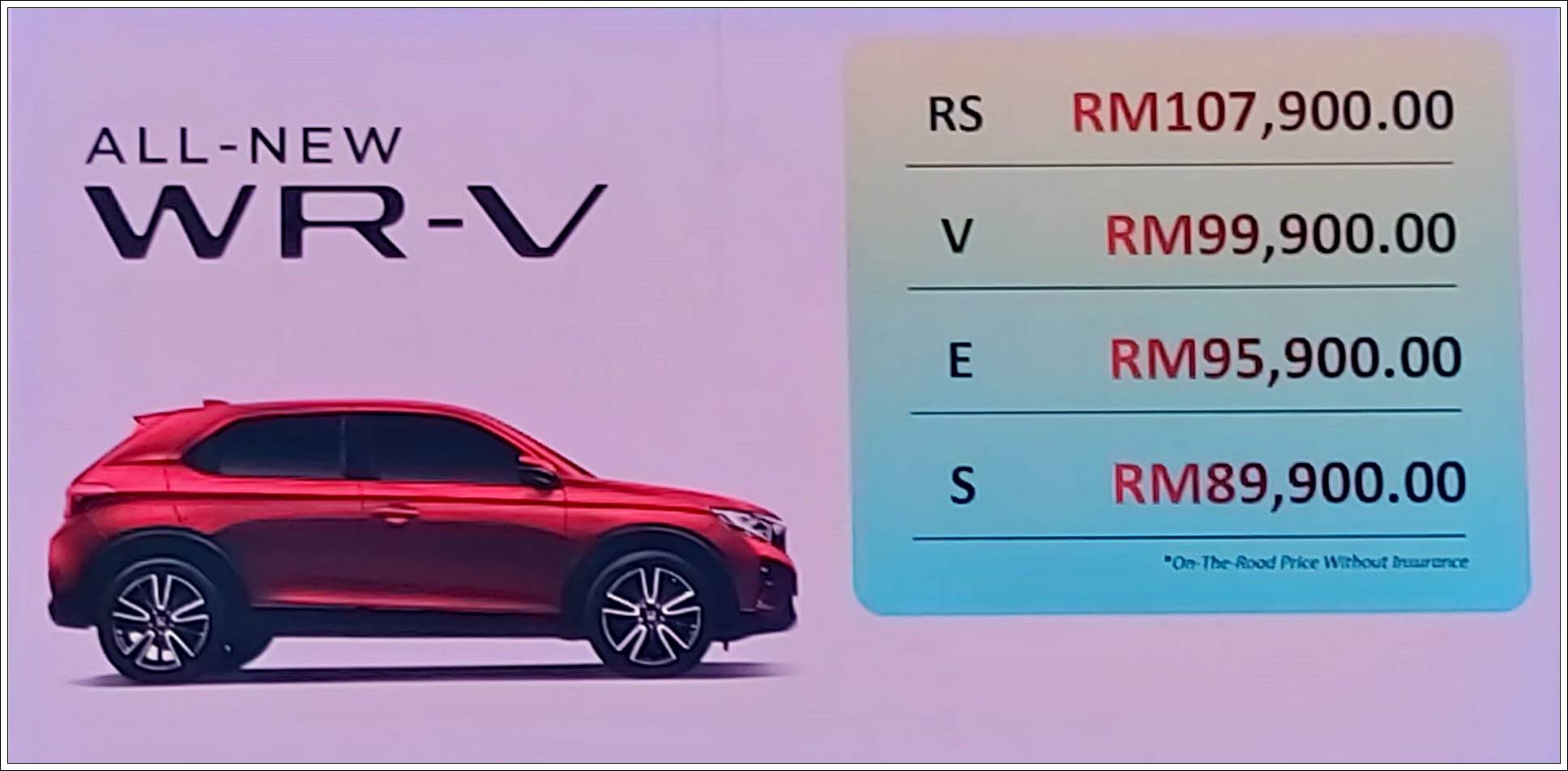
Developed for the region
The WR-V (which stands for Winsome Runabout Vehicle) is a brand new model line which has been developed primarily for the region. In fact, much of the R&D was done in Thailand although the primary production hub is in Indonesia. While other markets import the WR-V from Indonesia, Malaysia is an exception where it is assembled locally at the plant in Melaka.
Even with the duty-free privilege of the AFTA agreement, many companies find it is still advantageous to assemble locally where they can get additional incentives from the government. These incentives help to offset production cost and allow more competitive pricing.
![Honda WR-V [2023]](https://www.motaauto.com/wp-content/uploads/2023/07/Honda-WR-V-2023-7-1.jpg)
With the arrival of the WR-V, Honda Malaysia has dropped the BR-V but one could say it’s ‘changed clothes’ as the WR-V uses the platform of the second generation BR-V (not introduced in Malaysia) currently on sale in Indonesia, Thailand and some other countries.
2-row seating
But where the BR-V had three rows of seats for 7 people as a selling point, the WR-V has 2-rows and accommodates 5 persons. Size-wise, as the chart below shows, the WR-V is almost the same size as the Ativa but the Proton is the largest of the three models.
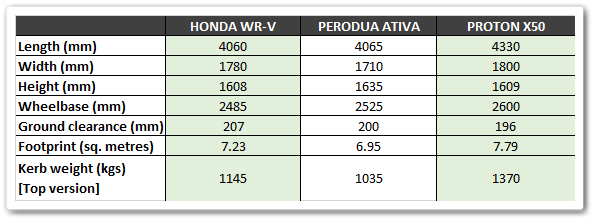
Though almost similar in length, the footprint of the WR-V is bigger due to having a wider body which would have implications on comfort within. Interestingly, the wheelbase is 40 mm shorter than the Ativa’s which could affect legroom.
Partially shared with BR-V
The styling of the WR-V generally follows current design language of the brand and in fact, Poychat Ua-arayaporn, Large Project Leader of the WR-V, said that the front half of the model is identical to the BR-V.
The front view is typical Honda with the distinctive grille nicely flanked by slim headlights. LEDs are used for the top two versions while the RS gets sequential turn signals as well. While the headlight specs are common throughout ASEAN, Ms Ua-arayaporn said that the Malaysian units have a headlight adjuster (a requirement for new cars sold here).
![Honda WR-V [2023]](https://www.motaauto.com/wp-content/uploads/2023/07/Honda-WR-V-2023-6.jpg)

‘Hidden’ rear door handles
The side view shows some resemblance to the bigger HR-V but the C-pillar is thicker like that of the City Hatchback. And like the HR-V, the WR-V has the door handles up by the roof pillar. It’s something which you can get used to but because rear passengers may be ‘first-timers’ to the car, they may be confused for a moment and need to be told where to open the door.
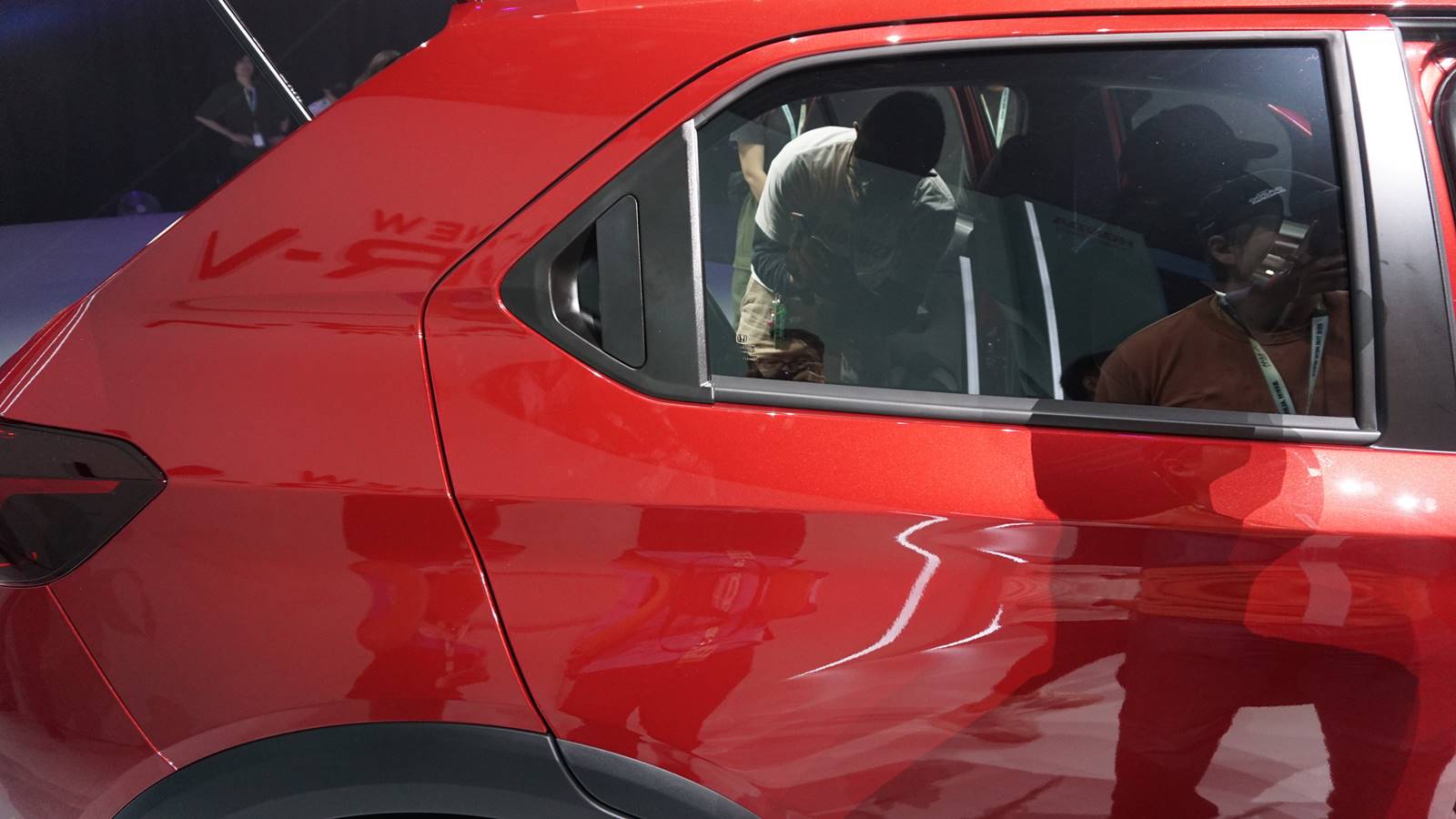
Familiar powertrain
The powertrain is the familiar 1.5-litre i-VTEC DOHC unit used in the City which produces 121 ps/145 Nm. All four versions have the same engine which is mated to a CVT. For now, there is no WR-V with a hybrid powertrain in any market and Honda Malaysia says there are no plans for an electrified powertrain for the model.
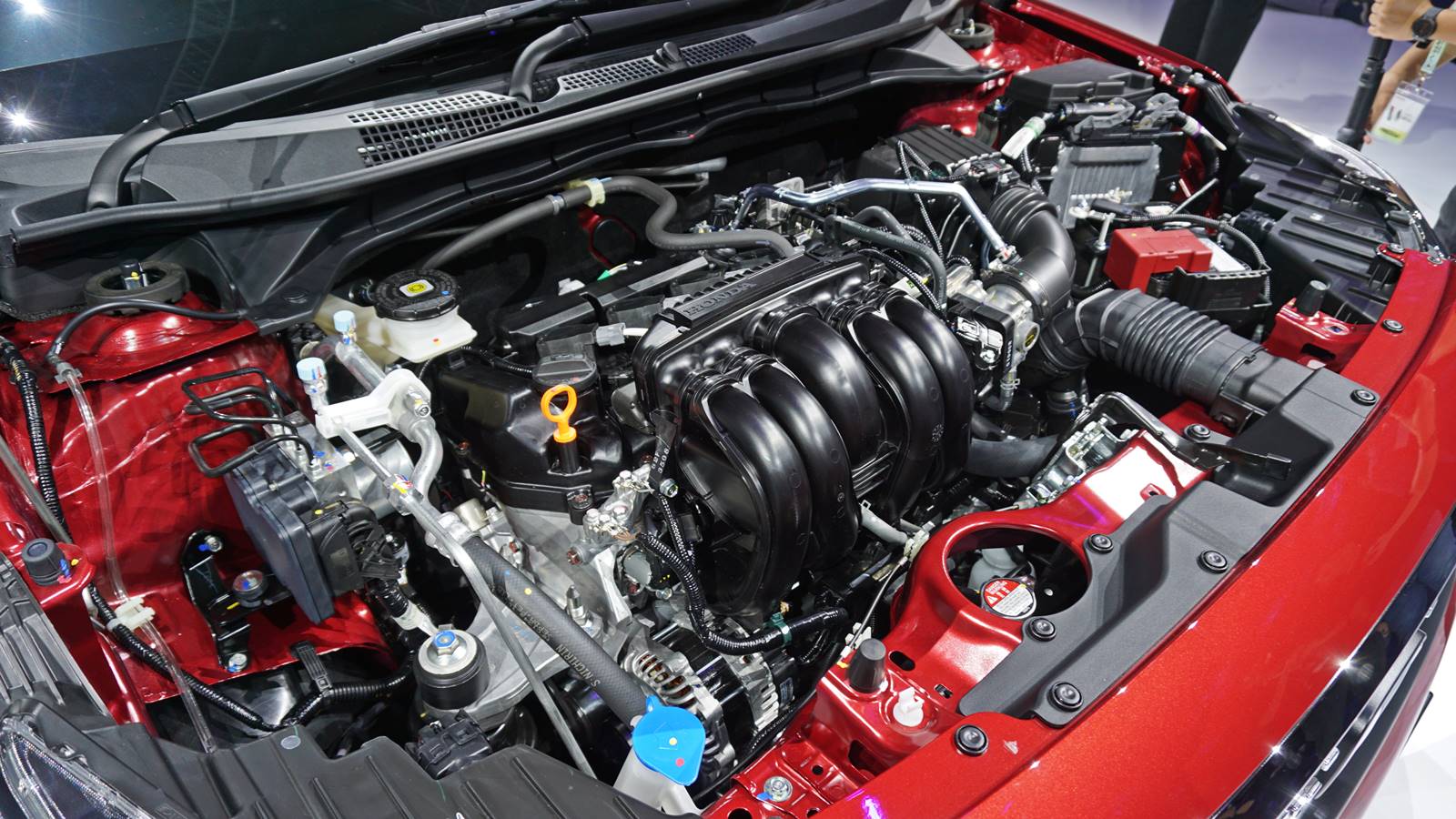
The CVT is the latest generation unit with a revised design that is said to improve efficiency by 4% for better fuel economy. The transmission also has Honda’s G-Design Shift programming for enhanced acceleration and deceleration. The driver will also have a sportier feeling during hard acceleration as there is a ‘step-up’ characteristic for the higher ratios.
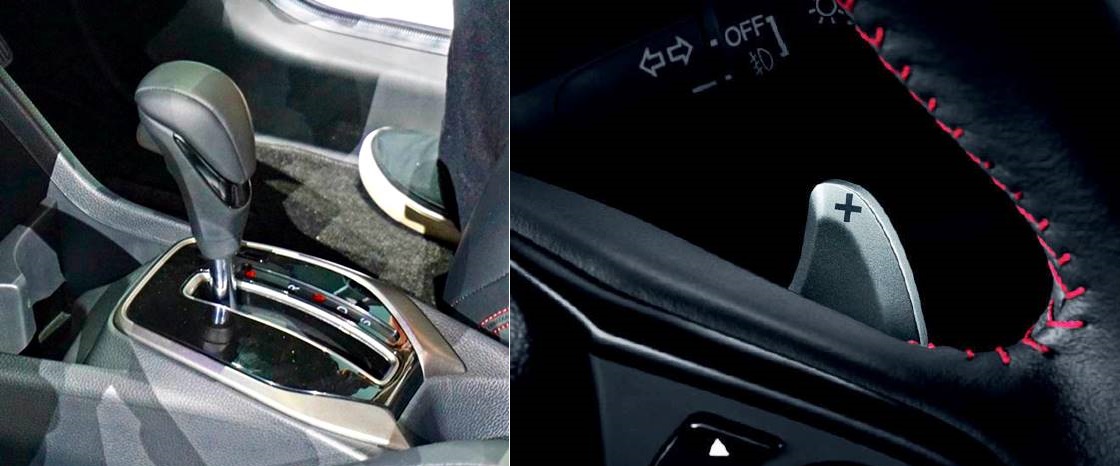
As with most cars in this class, the suspension is a simple strut/torsion beam layout. Much effort has gone into making the structure rigid, with the area around the rear opening strengthened to give better resistance to deformation.
Noise levels have also been reduced by using a fully closed side body panel system (which also prevents entry of dust and smells) as well as more extensive use of foam inside the box sections. In spite of its price class, the WR-V has also been given a premium insulation package with sound insulators in many areas and various measures taken in the engine bay.
To make driving more enjoyable and reduce fatigue, the vibrations coming through the steering wheel have also been lowered. This has been achieved through the installation of a module with a steering damper.
Sporty theme for interior
While the WR-V is a SUV (or crossover), the interior designers have chosen a sporty theme for the interior. This is especially so for the top two versions which have blue (V version) and red (RS version) stitching on the leather seat upholstery. Nothing wrong with looking sporty although one might think that, for a SUV, something looking ‘adventurous’ or ‘rugged’ might be more suitable.
![Honda WR-V [2023]](https://www.motaauto.com/wp-content/uploads/2023/07/Honda-WR-V-2023-1.jpg)
As with all Hondas, the equipment list is generous and justifies the pricetags. All versions have a 7-inch touchscreen within the dashboard rather than looking like a standalone tablet (which is the trend these days). This is the command centre for the infotainment system which can have its functionality expanded by connecting a smartphone using either Apple Carplay or Android Auto.

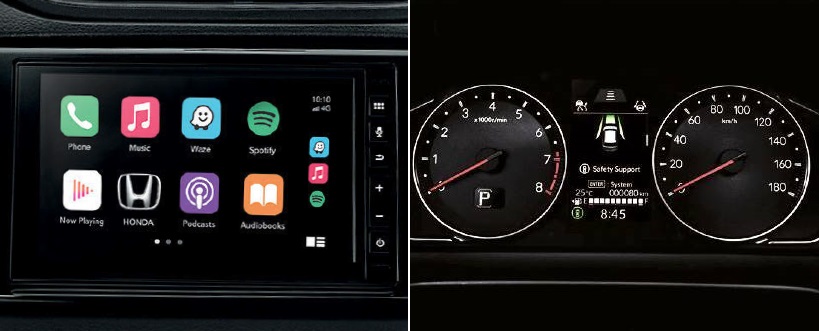
With the development team living in the region and experiencing the traffic jams in Bangkok daily, there was obviously a greater understanding of the conditions motorists endure. They realised that keeping the cabin cool is important and made sure that the airflow is more efficient and compressor performance is stronger.
This would help bring down the cabin temperature more quickly. This can also be achieved using Honda CONNECT (available only in the WR-V RS) which has Remote Engine Start which can also activate the air-conditioner before entering the vehicle.

Space for 2 bikes in the back
The boot space with back seats in use is 380 litres, with a depth of 778 mm. One or both of the backrests can be folded down to expand the volume with a floor length of 1.47 metres. This would allow the carriage of two road bikes or a lot of stuff if a couple is doing the balik kampung journey. incidentally, in the boot floor is a full-sized spare wheel, not a skinny space-saver.
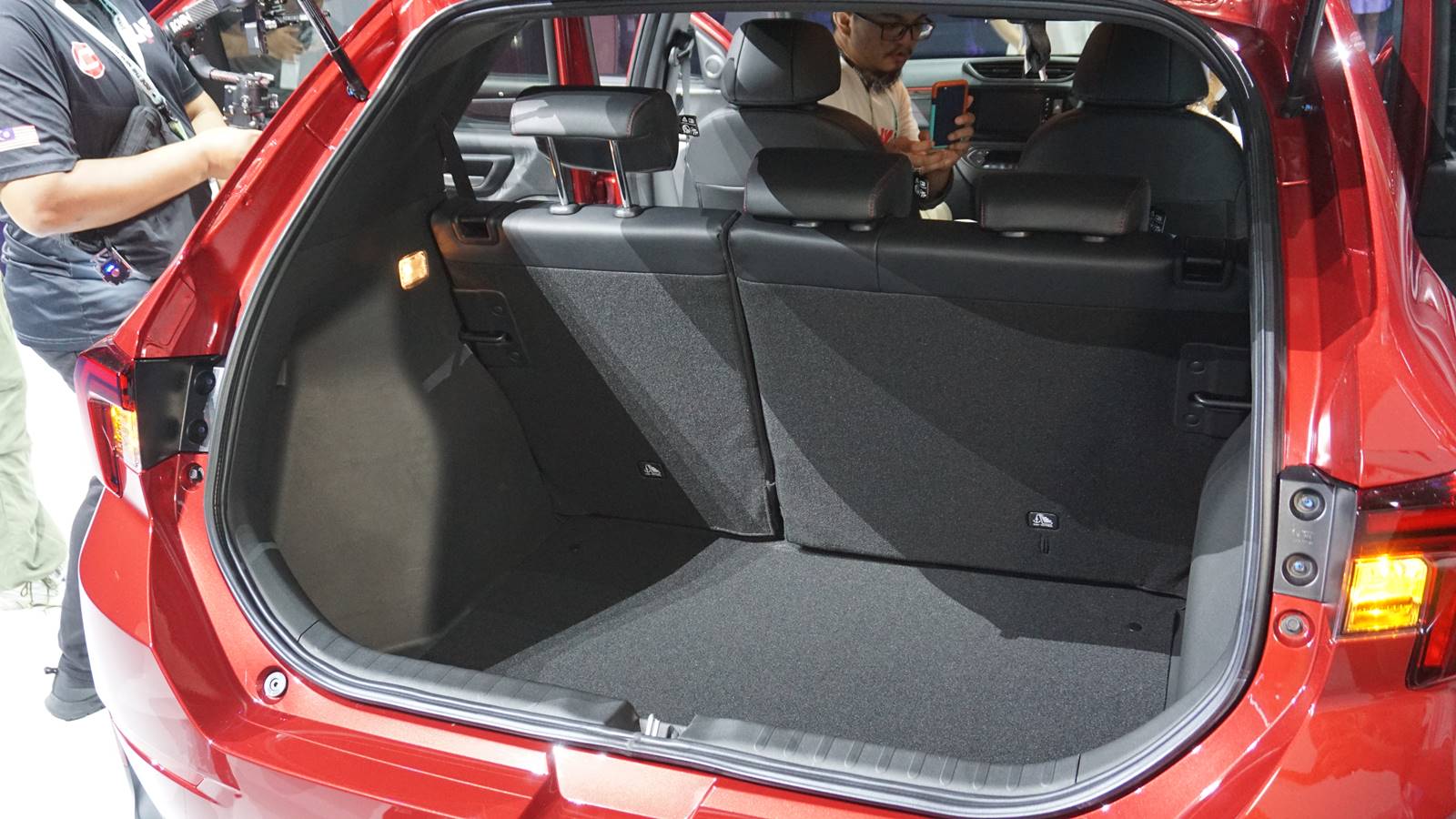
Honda SENSING for three versions
Like all other Honda models, the WR-V comes with the integrated safety system suite known as Honda SENSING. This uses a single camera (but no radar) to scan the road ahead and identify possible hazards.

The camera is perhaps the most important element as the various active systems, including Adaptive Cruise Control and autonomous braking, depend on what it sees. The latest generation has a wide angle to ensure broader frontal coverage which is important to detect vehicles approaching from the sides.
LaneWatch standard for all versions
LaneWatch is not part of the Honda SENSING system but is installed in every version of the WR-V. This is a small camera mounted below the leftside door mirror to provide an image of the blind spot. The image is displayed on the centre touchscreen with clarity even at night. It only comes on when the left signal is active but the driver can also manually activate the camera if required.
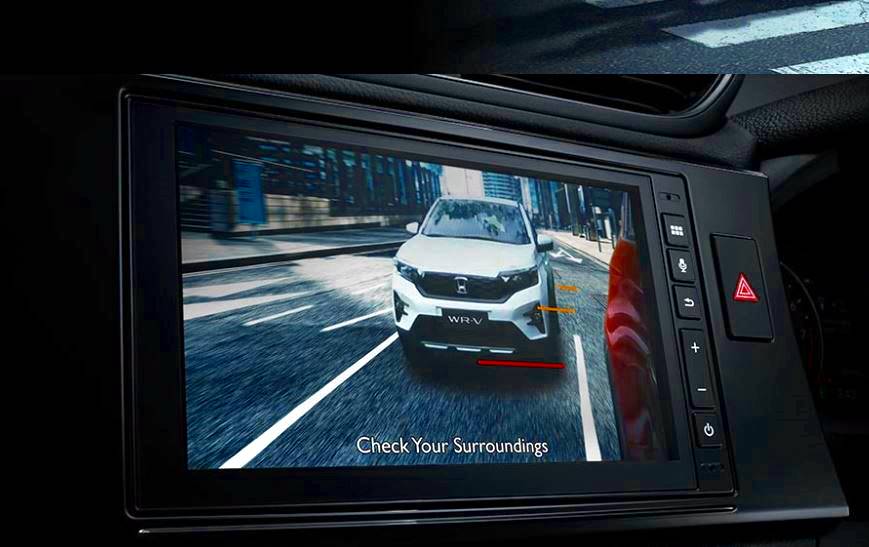
LaneWatch is a useful innovation by Honda as it not only shows the driver the situation in the blind spot but also provides guide lines. Being positioned in the middle of the dashboard also means the driver does not have to turn the head as much as when having to look at the door mirror.
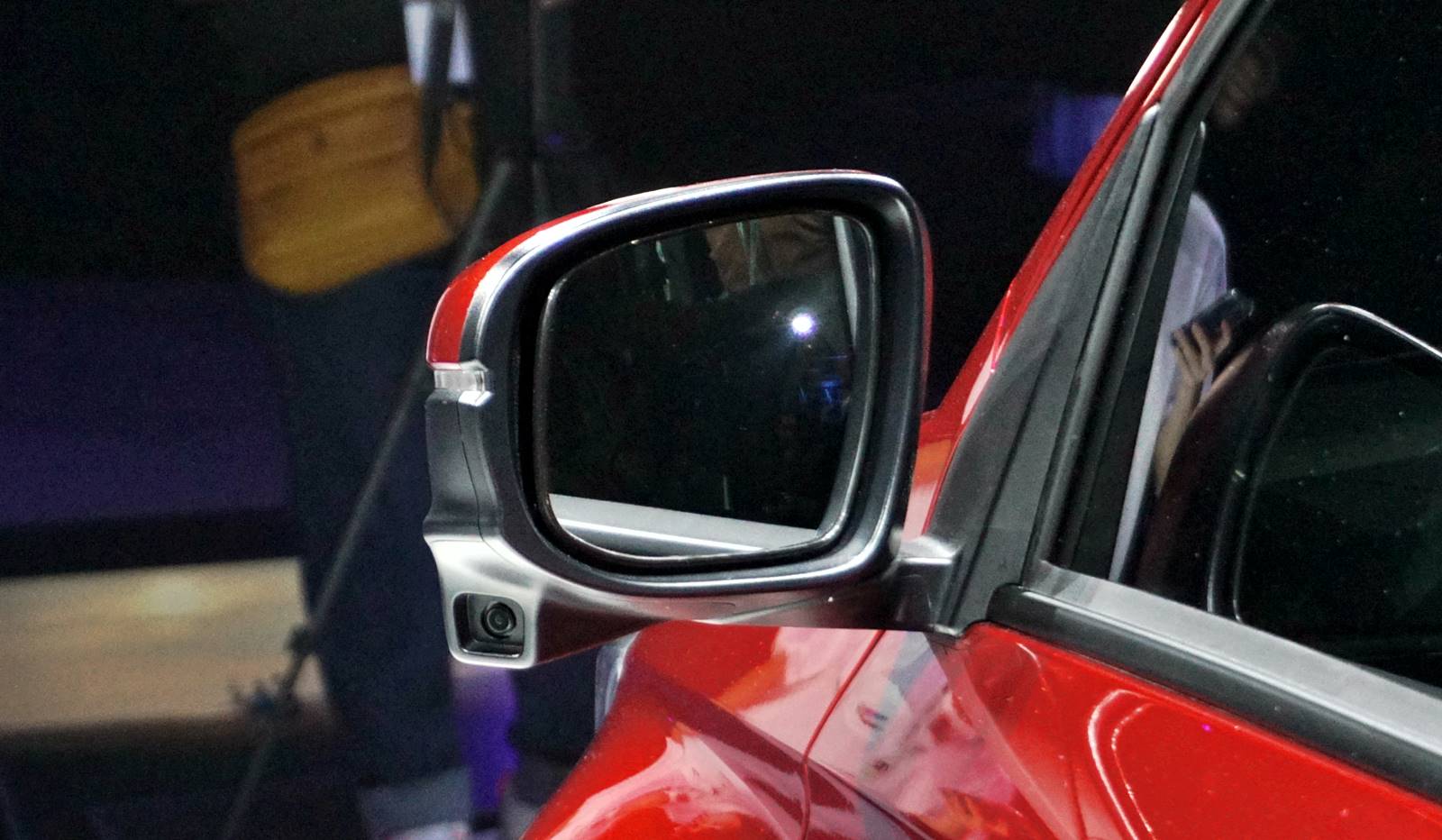
There was a rumour that Honda was going to discontinue LaneWatch, probably due to cost reasons. This may well apply to other markets where the camera is integrated with the mirror housing.
In ASEAN models like the City and WR-V, the camera appears to be a separate unit attached to the housing. This could be a lower-cost approach, allowing continued use of the feature which is why we see it in the new WR-V.
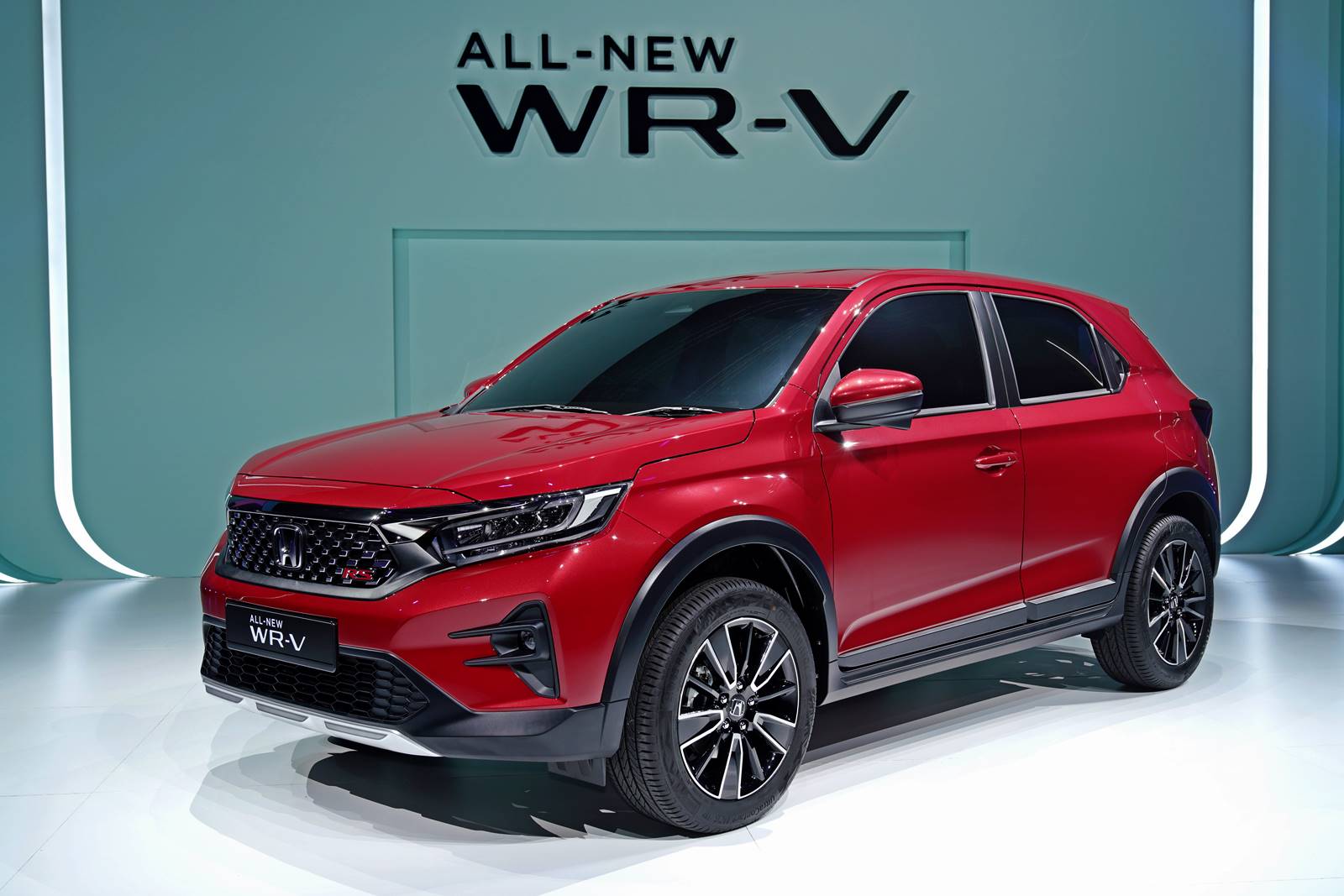
First 2 months’ stock sold
Though having a starting price of RM89,900 which is RM18,700 higher than the top Ativa and RM3,300 more than the X50, there shouldn’t be a shortage of buyers with the strength of the Honda brand.
As it is – not unusual for a new Honda model – the first two months’ stock is already taken at launch time with 2,500 bookings already received.
Perhaps the addition of another choice in the segment will ‘relieve’ the pressure on Proton and Perodua since they already have a long waiting list for those models (not that they are likely to be grateful).
The new WR-V is now at all Honda dealerships and to locate a showroom near you, visit www.honda.com.my.
![Honda WR-V [2023]](https://www.motaauto.com/wp-content/uploads/2023/07/Honda-WR-V-2023-8.jpg)
